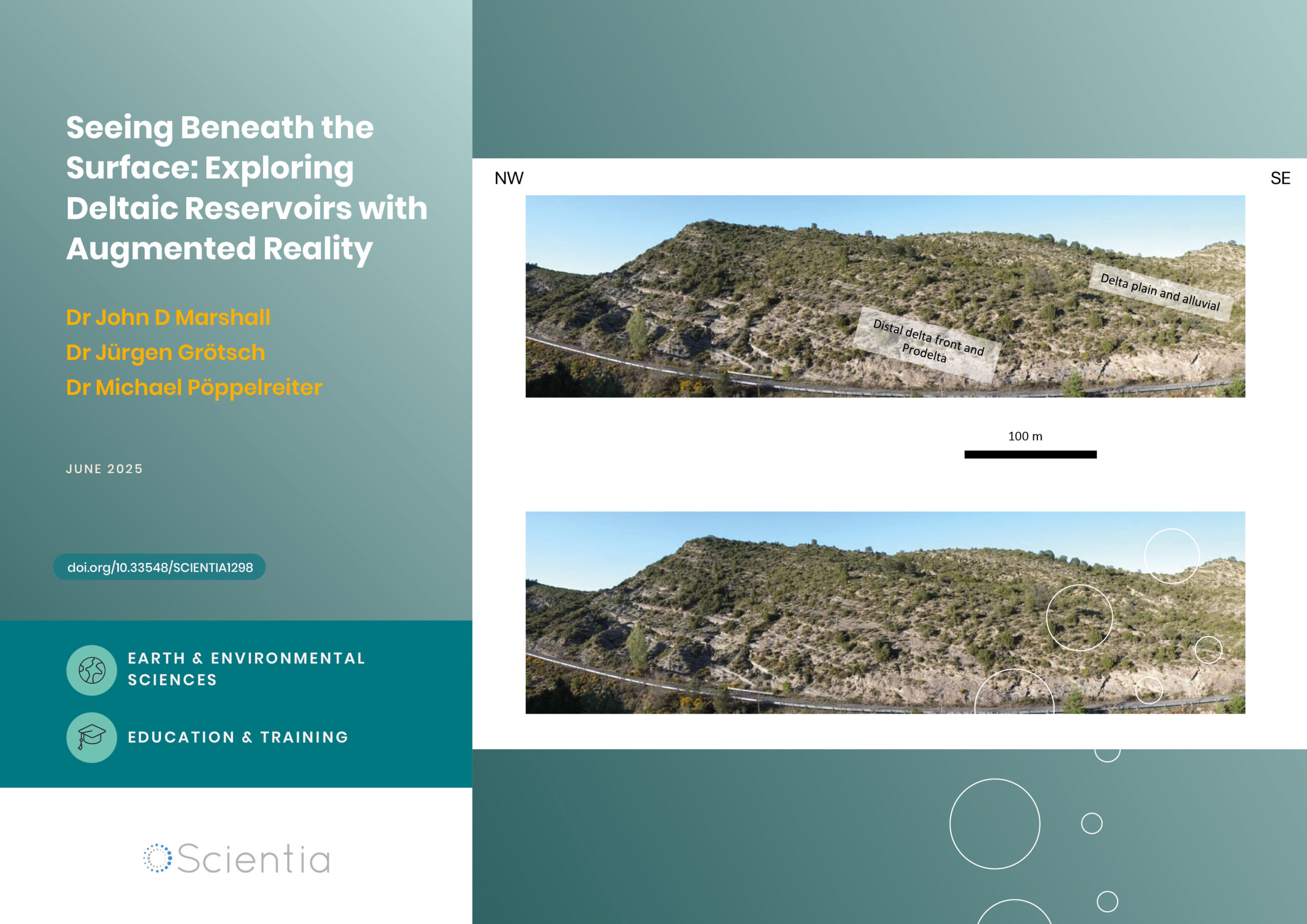Dr Tennille D. Presley – Sounding the Right Note: Integrating Music and STEM Teaching
Young people can often be discouraged from engaging with STEM subjects because they seem to have little obvious connection to their everyday lives. At Winston-Salem State University in North Carolina, an innovative program led by Dr Tennille D. Presley, is seeking to engage students by combining physics and biology with an art that is central to many students’ social lives: music. Early results from the program suggest that it has been successful in making science exciting and showing students that physics is involved in everything.
Connecting Physics with Everyday Life
Physics has long been regarded as a highly prestigious academic discipline, often talked about in terms of complex theories such as quantum mechanics and represented by exotic technology such as CERN’s Large Hadron Collider. For students, however, this picture can be intimidating: not only can they find physics difficult to relate to other disciplines, but it can also seem disconnected from the reality of their own lives, leading them to feel that physics is not for them.
Dr Tennille D. Presley, a physics professor based at Winston-Salem State University (WSSU), is leading a radical new interdisciplinary program that challenges such perceptions by engaging young people with physics and biology through creative teaching methods – ranging from making music with household objects to studying the physics of baking a cake. Dr Presley’s academic background makes her well suited to lead an interdisciplinary project: she is a bio-physicist whose research is concerned with the influence of factors such as diet, exercise, free radicals and heat treatment on diabetes.
Dr Presley’s collaborators on the program are music professor Dr Myron Brown, education professor Dr Denise Johnson, and biology professor Dr Mesia Steed. Together, this team has developed novel methods to integrate the teaching of physics, music and biology in ways that engage and excite students of all ages.
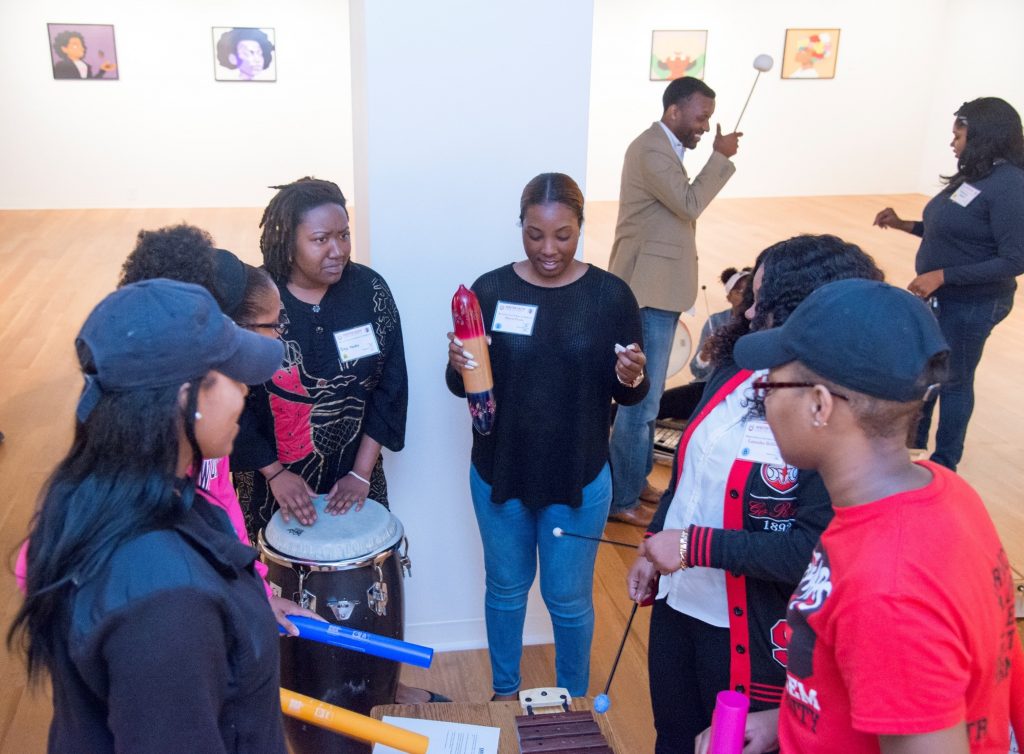
Inside the Classroom
Dr Presley’s team redesigned an existing undergraduate course at WSSU, entitled Music Physics/Acoustics, to include a much broader curriculum under the name of Biophysics of Music. In the new course, students learn physics, biology and music, integrated through teaching methods that focus on active learning. The team trialled these methods in two workshops, one in October 2018 and again the following year, in association with Girls Empowered by Mathematics and Science (GEMS) – an organisation for female middle-school students directed by Dr Johnson. Each workshop attracted over 50 participants – a promising start that led to the introduction of the new program in the Spring 2019 semester.
The program included both a Lecture course and an Investigation and Research course. During the Lecture course, students were introduced to key concepts of the three disciplines involved. Dr Presley taught the fundamentals of physics including Newton’s laws of motion, alongside elements of energy, waves and sound mechanics. Dr Steed taught students about the physiology of the ear and the role of neurophysiology in the perception of music, while Dr Brown not only taught the fundamental concepts of music, including pitch, dynamics, tempo and timbre, but introduced students to the physics and measurement of these qualities. To bridge any gaps in understanding within the course, Zakiyah Henry served as a teaching assistant and provided help for students during classroom activities and outside the classroom.
In the Investigation and Research course, students learned about research methods, and developed their own research protocols incorporating physics, biology and music. For instance, the physics, biology and music involved in the process of baking a cake was explored. After designing and conducting their own experiments, the class presented their findings, orally and through a poster presentation, at WSSU’s annual Scholarship Day.
The group involved in this experiment found that from the perspective of physics, baking a cake involved the conversion of energy into heat, power and work. From a biological viewpoint, the consistency and structure of the cake were products of the molecular characteristics of the ingredients, whilst from the perspective of music, the students found that the baker’s choice of music resulted in different beats per minute in the mixing process, which could significantly change the texture of the cake. Although for most, it was the first time they had ever presented publicly, the students in the course won the prize for Most Creative Poster Presentation.
The program was run again in 2020. Whereas in 2019, most students had a background in biology, the 2020 program attracted a more diverse group: 40% were majoring in biology, 40% in music, and 20% in education. Moreover, the student body included two drum majors in the university’s marching band, a member of the university’s gospel choir and an experienced musical engineer – each of whom was able to contribute their own experience and insights to the course. For most students, physics was the most challenging part of the course, so the team focused on enhancing knowledge of physics whilst relating it to music and biology.
‘The major accomplishment of the program has been students identifying that physics is involved in everything.’
Experiments and Research Projects
Dr Presley and her colleagues used a variety of innovative teaching methods to capture the interest of students and demonstrate the ways that physics permeated their lives. For example, students learned about the characteristics of sound by striking glasses filled with varying amounts of warm or cold water. The experiment showed that loudness, intensity, pitch and frequency were all affected by the quantity of water in the glass and its temperature. In another activity, hand bells were used to demonstrate the phenomenon of resonance: when a bell of a particular frequency was rung, it generated resonance in other bells whose frequencies were part of the same harmonic series. The team employed computer technology to demonstrate the effects of frequency, amplitude and the Doppler Effect on sound through simulations visually represented on screen.
The students also engaged in a cycling class using the university’s recreation centre. The goal was to investigate the effects of listening to different genres of music on cycling performance – with measurements including revolutions, time, distance and power generated. The experiment was a huge success, as the university chancellor visited and the students gained significant knowledge in the intersection of physics, music and biology in cycling and exercise.
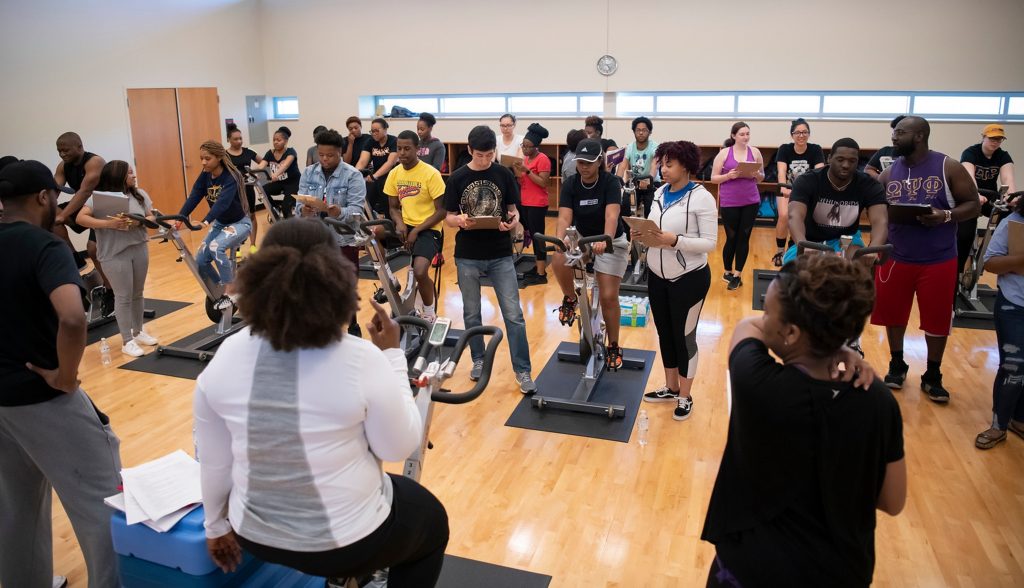
On the research side of the program, students conducted laboratory research in Dr Presley’s lab. Performed by computer engineering major, Brandon Daughtry, the effects of different genres of music on participants at rest and in motion were explored using the Python data analytics tool. By measuring blood pressure, heart rate and power output when stationary and while climbing a staircase, Python was able to predict which types of music would be most effective in different circumstances. Through the experiment, Brandon found that when at rest, classical music, jazz and rap all had measurable effects on the body, but when in motion, only rap music significantly altered heart rate response. This work resulted in a presentation award at the 2019 Annual Biomedical Research Conference for Minority Students.
In another research project, biology major Shaheera Drummond examined the effects of varying musical genres on cellular growth and viability, by exposing human embryonic kidney cells to different musical genres at room temperature for 30 minutes each day. From her data, she concluded that music has a positive effect on cell viability and cell growth, with gospel music having the most pronounced effect. Furthermore, varying the musical genre also altered cellular behavior. Recently, two additional students have joined the research team exploring the impact of music on skin conductivity.
In all of these experiments, students engaged in everyday activities and applied mathematical formulas in order to scientifically understand the processes behind them. ‘The major accomplishment of the program has been students identifying that physics is involved in everything,’ says Dr Presley.
During the 2020 program, students followed their own interests in developing projects to explore four new topics: music as treatment for coronavirus; the biology and physics of music engineering; music therapy as treatment for pain; and the biophysics of synaesthesia.
Crossing Disciplinary Boundaries
To further demonstrate inter-relationships between science and art, the program team gave guest lectures in music, physics and biology courses. Dr Steed took the opportunity to introduce a new topic to her Cell Biology course, entitled Music and the Cell. This led to the Cell Biology and Biophysics of Music courses being brought together for two weeks, in which biology students benefited from the broader perspectives of students enrolled in the Biophysics of Music course. Similarly, Drs Brown and Presley teamed up to integrate biophysics and music into a Fundamentals of Music course and College Physics course. Lastly, Dr Johnson introduced the students to educational research, and effective STEM pedagogy and integrative learning strategies.
Beyond the three disciplines at the heart of the program, the projects that students conducted also exposed them to the fields of exercise science, chemistry, psychology and art. Each faculty member in the program assessed each of their respective courses, and found that students had a greater appreciation for the interrelationships of the arts and sciences, and a deeper understanding of physics, music and biology.
School Outreach
The program established a link with a local high school, enabling university students to go into the school, present their knowledge and engage in hands-on activities with high-school students. Because Dr Johnson is an education professor, she provided training for the WSSU students on effective methods to engage and interact with the high school students. The students from WSSU also served as mentors for high-school students, and were able to give them insights into college life. This encouraged a number of the high-school students to apply to WSSU.
In July of 2020, the team expanded their interactions by implementing an interactive online program called the Biophysics of Music Virtual Summer Program. During this four-week program, middle school, high school and college students spent two days a week watching live speakers and taking part in interactive activities, focusing on topics including mechanics, sound, forces and electricity. Two additional days in the week were dedicated to the students having one-on-one educational sessions with their teaching assistants, and preparatory assignments for the live sessions.
The goal of the program was to highlight atypical STEM careers that relate to physics, music and biology, while exploring activities that complement those respective careers. The live speakers included a dancer, sound engineer, US Naval Captain, and a cardiologist. Overall, the students established a greater appreciation for interdisciplinary learning, recognising that physics is universal.
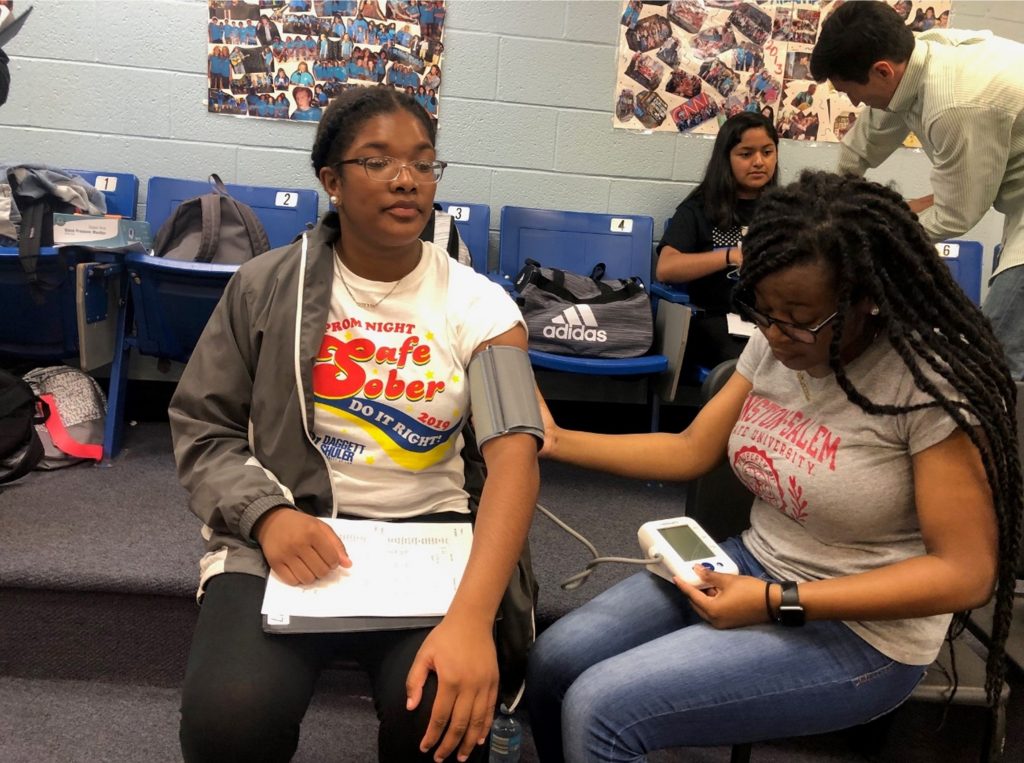
Bringing in STEM Talent from Under-represented Groups
WSSU is a historically black university in a country in which black people remain significantly under-represented in STEM disciplines. The innovative interdisciplinary program has been successful in engaging black students, as well as women, who are also under-represented in the STEM community.
Going forward, the team seeks to increase the numbers of students taking the course by engaging in freshman activities and continuing their collaboration with the GEMS project in order to attract female high-school students. The kind of collaborative integration of arts and sciences being pioneered under Dr Presley’s leadership may serve as a model for other universities trying to reach under-represented groups in a range of global contexts.
Reference
https://doi.org/10.33548/SCIENTIA532
Meet the researcher
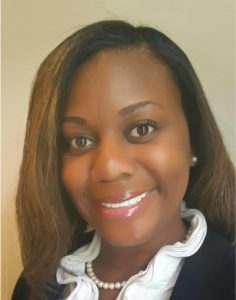
Dr Tennille D. Presley
Associate Professor of Physics
Department of Chemistry
Winston-Salem State University
Winston-Salem, NC
USA
Dr Tennille D. Presley earned her PhD in Biophysics from Ohio State University. She subsequently undertook postdoctoral training in Physics and Translational Science at Wake Forest University, where she remains a Faculty Affiliate. Appointed to Winston-Salem State University in 2010, she also serves as a Visiting Faculty member at the Brookhaven National Laboratory. Dr Presley has published extensively on her research in free-radicals and has received a significant range of awards and honours. These include US Delegate for the 6th IUPAP International Conference on Women in Physics, Best Student Research Achievement at Ohio State University in 2007 and the Buckeyes Under-40 award received in 2016: the same year her book, Biophysics of the Senses was published. Dr Presley has a keen interest in equality issues and has participated in a number of programs aimed at enhancing the position of women and people of colour within STEM.
CONTACT
E: presleyt@wssu.edu
W: https://www.wssu.edu/profiles/presleyt/index.html
KEY COLLABORATORS
Dr Myron D. Brown, Department of Music, Winston-Salem State University
Dr Denise T. Johnson, Department of Education, Winston-Salem State University
Dr Mesia M. Steed, Department of Biological Sciences, Winston-Salem State University
FUNDING
National Science Foundation Targeted Infusion Project: Enriching Student Learning through Biophysics and Music (2018–2021)

Want to republish our articles?
We encourage all formats of sharing and republishing of our articles. Whether you want to host on your website, publication or blog, we welcome this. Find out more
Creative Commons Licence
(CC BY 4.0)
This work is licensed under a Creative Commons Attribution 4.0 International License. 
What does this mean?
Share: You can copy and redistribute the material in any medium or format
Adapt: You can change, and build upon the material for any purpose, even commercially.
Credit: You must give appropriate credit, provide a link to the license, and indicate if changes were made.
More articles you may like
How Food Environments Shape Our Eating Habits
How we eat dramatically impacts our health, yet millions of Americans live in ‘food deserts’ – areas with limited access to fresh, nutritious food. Recent research reveals that solving this crisis requires looking beyond just physical access to food to understand how our entire community environment shapes our dietary choices. Through a series of pioneering studies, Dr Terrence Thomas and colleagues at North Carolina A&T State University have been investigating how different aspects of our food environment influence what we put on our plates. Their findings suggest that creating lasting change requires reimagining how communities engage with food at every level.
Probing Electron Dynamics in the Ultrafast Regime
In the atoms that make up the matter around us, negatively charged particles called electrons have properties such as spin and orbital angular momentum. Researchers at Martin Luther University Halle-Wittenberg have developed a theoretical framework which allows them to simulate the dynamics of the spin and orbital angular momentum of electrons in materials when probed with an ultrafast laser pulse. Using this framework, they are able to simulate different materials and improve our understanding of dynamics on an atomic scale.
Seeing Beneath the Surface: Exploring Deltaic Reservoirs with Augmented Reality
In the Aínsa Basin of the Spanish Pyrenees, the Mondot-1 well was drilled, cored, and fully logged to capture a detailed record of a long-buried ancient river delta system. Dr. John D. Marshall, Dr. Jürgen Grötsch, and Dr. Michael C. Pöppelreiter with co-workers at Shell International used this core to trace how sediments once flowed across the landscape, and were deposited under shifting tectonic conditions. The team employed augmented reality and interactive virtual displays; these innovative tools offer new ways to explore subsurface depositional systems, and are particularly useful in locations where physical access to the core is difficult, or no longer possible.
Dr Jim Wu | Ziresovir Offers New Hope for Treating Respiratory Syncytial Virus Infections
Respiratory syncytial virus (RSV) causes respiratory tract infections in children and adults. While for many patients the outcomes of infection are mild, for others, infection can prove fatal, and there is a lack of effective treatments. Dr Jim Wu from the Shanghai Ark Biopharmaceutical Company in China carries out his vital research to develop new, safe, and effective treatments to tackle this killer.



